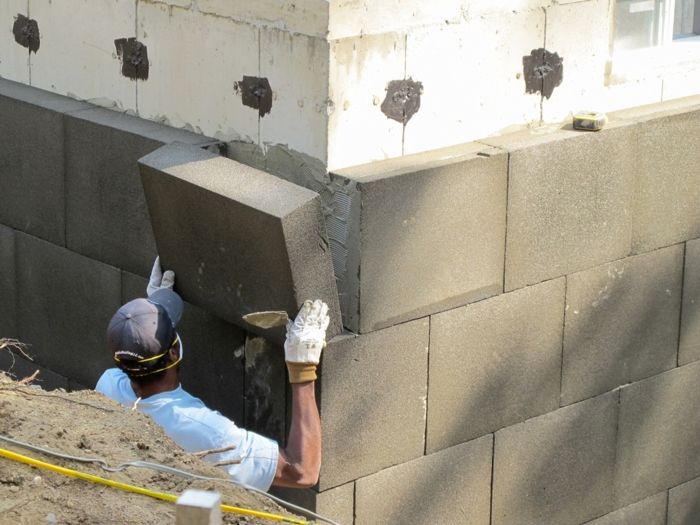
Pittsburgh Corning has pulled the plug on Foamglas sales in the North American residential market as it concentrates on developing business elsewhere.
Foamglas, a cellular glass material developed by Pittsburgh Corning in the 1930s, has a lower environmental impact than rigid-foam insulation, making it an appealing alternative. Made entirely of glass, the material didn’t need dangerous fire retardants, can be manufactured without the blowing agents that cause global warming and ozone depletion, and had a number of attractive performance characteristics.
But it’s also two or three times as expensive as one of its chief rivals, extruded polystyrene (XPS), and its R-value of 3.4 is about 30% lower. Ultimately, the hurdles of building a North American presence on the residential side proved too much, although Foamglas continues to be manufactured at two plants in the U.S. and sold for industrial applications through a separate Foamglas division.
Foamglas was never common on U.S. building sites, but it did win some converts. In an article posted at GBA in 2012, Alex Wilson explained why he chose Foamglas for use beneath the slab and on the outside of the foundation walls of a 200-year-old house he was rebuilding in Vermont. In addition to being more environmentally benign, the material has high compressive strength, excellent moisture resistance, high fire resistance and is impervious to wood-boring insects, Wilson said.
In an article at BuildingGreen two years earlier, Wilson said Foamglas was manufactured in blocks 18 in. by 24 in. and in thicknesses from 1-1/2 in. to 6 in. It had enough compressive strength to be used beneath concrete slabs, blocked radon, didn’t support the growth of mold and kept out termites and rodents. “I have a new favorite insulation material,” he said at the time.
Price was a problem
Pittsburgh Corning has wiped most traces of residential Foamglas from its U.S. corporate website. And getting any information about the product from Pittsburgh Corning’s corporate office proved impossible.
International sales are now managed by Marco Vincenz, who works in Belgium, the United Arab Emirates and Switzerland, also travels extensively. He was reached by GBA on a Swiss mobile number. Vincenz said the change in strategy took place within the last couple of months, mainly because the company did not want to disappoint customers with anything less than stellar service.
“The situation is that our setup for building applications in the U.S. is not in a way we’d like to have,” he said. “Foamglas is a high class, high quality, and high price product. We are fully aware of that, and we are used to providing good service as well as good delivery. We are not able in North America to do that at the moment.
“If you are not ready in the market for smaller deliveries, you disappoint everybody,” he continued. “We prefer to say, ‘Sorry, we are not in a position, we cannot provide proper service,’ instead of trying to deliver something and in the end making everybody unhappy.”
Sales on the industrial size, however, are “fantastic,” he said.
Why didn’t Foamglas catch on with more builders?
“It catches,” he said, “but very slowly. The reason is price.”
XPS has an “extremely strong” position among U.S. builders, Vincenz said. Foamglas can cost two to three times as much, and most people were not willing to look at the performance benefits of using it. Further, the sheer size of the U.S. market was a problem, particularly when orders were small.
Never say never
While the timing for Foamglas wasn’t right, Vincenz said he hoped it could be re-introduced in the future. “We cannot do everything, so that means in the U.S. we’ll try to do a proper set up in, I can’t say, maybe one, two, or maybe five years,” he said.
And if builders were determined enough to get their hands on it now, something could probably be worked out.
“Very simple,” he said. “Big delivery, yes. Small delivery, no. Let’s say you want to order 10 [shipping] containers. That’s big. If you want to go for two or three or five pallets, that’s small. That sounds very arrogant, but the intention behind that is not arrogance.”
U.S. residential orders would probably be filled from a factory in either Belgium or the Czech Republic, he said, with an outside change it might even come from factories here. Contact information for Vincenz is listed at a European Foamglas Building website.
Read more: http://www.greenbuildingadvisor.com/blogs/dept/green-building-news%2A#ixzz46s6hsSik
Follow us: @gbadvisor on Twitter | GreenBuildingAdvisor on Facebook
Fine Homebuilding Recommended Products
Fine Homebuilding receives a commission for items purchased through links on this site, including Amazon Associates and other affiliate advertising programs.

Handy Heat Gun

Affordable IR Camera

Reliable Crimp Connectors

Foamglas insulation has high compressive strength and is impervious to insects and water, making it a good choice for below grade and sub-slab applications. Disadvantaged by its relatively high cost, Foamglas didn't catch on with enough U.S. builders.

























